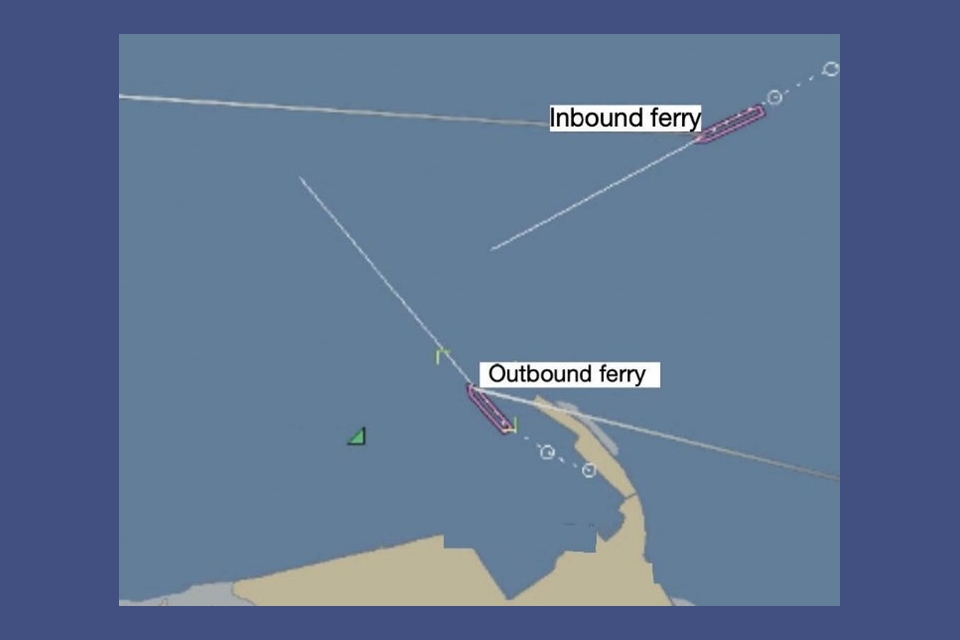Make sure you have an accurate picture of the traffic situation before departure. The Nautical Institute gives this advice in its latest Mars Report in which two ferries came very close to collision.
The Nautical Institute gathers reports of maritime accidents and near-misses. It then publishes these so-called Mars Reports (anonymously) to prevent other accidents from happening. A summary of this incident:
A ferry was inbound to a small port in daylight conditions with good visibility at a speed of 9.5 knots. A bridge team member called the port Vessel Traffic Services (VTS) to inquire if another ferry, already in the port and due to depart, would in fact leave on the specified time.
Port VTS responded that the ferry would depart in the next ten or fifteen minutes and that it would be best if the approaching vessel held position outside the port until the outbound ferry left, given the constrained nature of the port. This information was given as a “suggestion” and not as an instruction.
Also read: Cargo vessel ignores collision with fishing vessel
About eighteen minutes later, port VTS called the inbound ferry to advise that the outbound ferry was singling up and would be leaving in the next minute or two. This was acknowledged by the inbound ferry. However, instead of holding position, they continued inbound at a reduced speed of about six knots.
On the departing ferry, the bridge team were not monitoring traffic prior to departure; instead, they relied on information from VTS regarding the position of the inbound vessel. The officer of the watch (OOW) stated that the ECDIS and radar were checked only after all lines were clear and they had lifted off the berth. They were surprised to see the inbound ferry, now very close, and only quick manoeuvres and last-minute communication between the vessels helped avoid collision.
As it transpired, a relieving master was bringing the inbound ferry into port as a training exercise under the supervision of the master. Poor communication between the master and the relieving master contributed to the close quarters situation developing.
Also read: Dutch Safety Board launches investigation into water taxi and ferry collision
Advice from The Nautical Institute
As with most incidents and accidents, several contributing factors conspired to bring about the close quarters situation:
- The VTS only suggested that the inbound ferry stay outside the port while the departing ferry was leaving. For unknown reasons, the inbound ferry’s bridge team decided to ignore this suggestion and entered the port anyway.
- The inbound ferry’s bridge team had less than adequate communications with each other and with outside actors.
- The departing ferry’s bridge team had less than adequate situational awareness of the port traffic situation and in particular the position of the incoming ferry.
- With or without a pilot, always ensure you have an accurate picture of the traffic situation before departure. In constrained waterways, it is easier to hold the berth while traffic passes than be obliged to manoeuvre.
Also read: Not reducing speed in fog leeds to vessel collision
Mars Reports
This accident was covered in the Mars Reports, originally published as Mars 202327, that are part of Report Number 368. A selection of this Mars Report will also be published in SWZ|Maritime’s July/August 2023 issue. The Nautical Institute compiles these reports to help prevent maritime accidents. That is why they are also published (in full) on SWZ|Maritime’s website.
More reports are needed to keep the scheme interesting and informative. All reports are read only by the Mars coordinator and are treated in the strictest confidence. To submit a report, please use the Mars report form.








